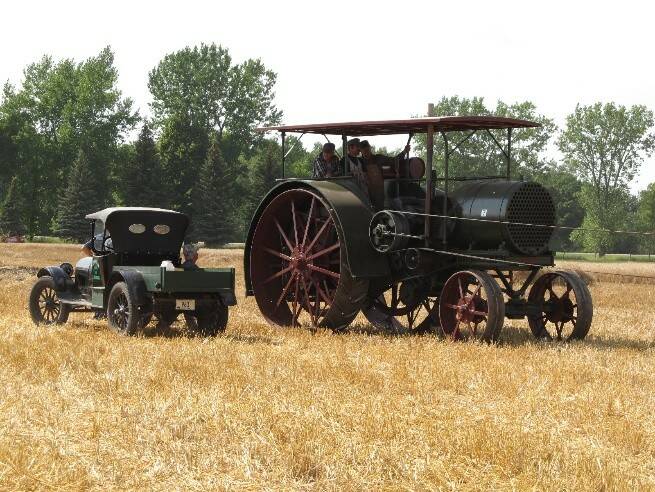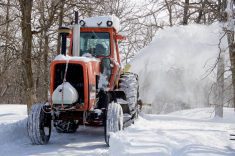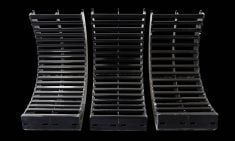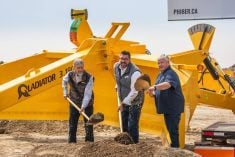With all the huge, high-powered and computerized tractors trundling around Elm River Colony near Newton, Man., where I grew up, hardly anybody remembers some of the amazing machines of years past.
The Aultman Taylor 30-60 was the king of tractors back in the day.
Most, myself included, don’t even know what it looked like, unless they’ve seen pictures. Only the oldest men on the colony still have memories of working with this piece of equipment.
Read Also

Finally getting paid for sustainable farming?
Alberta project says they might have a line on a workable ecosystem credit model to reward farmers for sustainability, and Manitoba might be next
During harvest, the 30-60 was the driving force behind the threshing machine, strong and steady, while six two-man teams took turns pitching sheaves for all they were worth. “Dependable, I should say!” one of those former sheaf pitchers chuckled when thinking of those times. “We were secretly hoping it would break down so we could catch a break. No such luck.”
Cornelius Aultman and Henry H. Taylor established the Aultman & Taylor Machinery Company in 1867 in Mansfield, Ohio. They manufactured steam engines, threshers and other farm machines.
In 1910, the first Aultman Taylor 30-60 was built and deemed one of the best tractors of its time. It remained at the top of the Aultman-Taylor line until the sale of the company in January 1923.
That sale came after years of financial difficulties. The Advance-Rumely Company of La Porte, Ind., bought out Aultman & Taylor, including all property, patents and designs. They ran into their own troubles though. In 1931, thanks to struggles through the Great Depression coupled with the State of Ohio revoking their Article of Incorporation for non-payment of incorporation dues, Allis-Chalmers of Wilmington, Del., became the new owners.
When I contacted the Manitoba Agricultural Museum in Austin for information on this tractor, I was put in touch with their historian, Alex Campbell.
“The Aultman Taylor 30-60 was a well-built, very powerful and reliable tractor for that time and could drive very large threshing machines, 50-inch cylinder width or more,” he said in an email. “To operate such a large threshing machine economically meant a large number of sheaf wagons, men and horses were required to feed the threshing machine.”
No surprise then that this was the preferred tractor for Hutterites. The acquisition of a unit proved a sound investment for Elm River Colony, as it served them well from 1934 to 1948.
From field to exhibit
Over the years, many different tractors have come and gone, most forgotten as quickly as the newest wonder rolled in. Of that vast fleet, only the remains of one warranted being placed in a museum.
This piece of Elm River Colony history went on to sit at the Manitoba Agricultural Museum for more than five decades.
In the early 1960s, the museum learned about the antique, which at that point had been parked for more then 10 years. By that time, many of its parts had been removed, some likely sold, including, sadly, all the brass parts, radiator and fan. Nevertheless, the museum was happy when Elm River Colony donated their rather sorry looking 30-60 to the facility’s collection.
The inoperable skeleton of the tractor spent years decorating the museum grounds, while other, running antiques entertained audiences at events such as the Manitoba Thresherman’s Reunion and Stampede every summer. The odd visitor occasionally lingered at its side for a while, perhaps reminiscing about their own experiences with the dependable 30-60.

Museum management always hoped to acquire parts for the 30-60 but, when that never happened, they eventually had to let the machine go.
“The museum had to make the difficult decision to deaccession this tractor, and it is no longer part of our collection,” Tricia Dyck, the museum’s collections and programing manager, informed me recently. “Deaccessioning artifacts like this tractor is always a challenging and nuanced process, as we strive to balance preservation, relevance, and the resources available to maintain our collection.”
I was surprised by this news, but certainly understood, especially since so much of the machine was missing.
Comparing the staying power of today’s state-of-the-art, but often traded off tractors though with the trusty Aultman Taylor 30-60, it seems, as Grandpa used to say, “They don’t make ‘em like they used to.”















